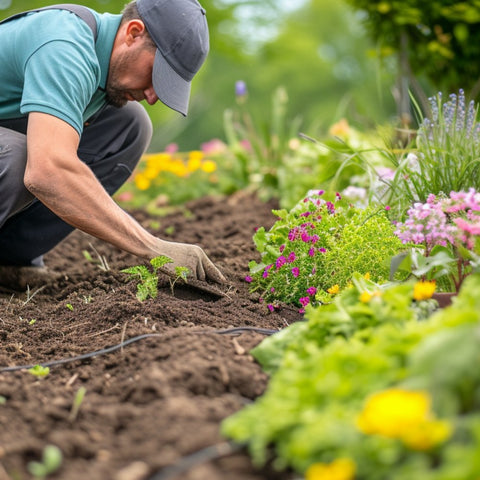Blog Post - Planting Grass Seed in Spring
Planting Grass Seed in Spring

Are you dreaming of a lush, green lawn that will be the envy of your neighbors? Look no further than planting grass seed in spring! Proper lawn care and maintenance are crucial for a vibrant and healthy yard, and spring is the perfect time to kickstart your lawn renovation project. In this comprehensive guide, we will take you through the necessary steps to ensure successful grass seed planting, from understanding the basics of grass seeds to caring for newly planted seeds and beyond. Let's dive in!
Understanding the Grass Seed Basics
Before you start planting grass seeds, it's important to familiarize yourself with the different types of grass seeds available. Various grass seeds are suitable for different climates and purposes, so it's essential to choose the right one for your specific needs. Consider factors such as the climate in your region and the amount of sunlight your lawn receives. This knowledge will help you select the perfect grass seed that will thrive in your yard.
Assessing the Lawn

Next, take a closer look at your existing lawn and identify areas that need improvement. Evaluate the coverage of your current grass and pinpoint any sparse or bare patches. Additionally, testing your soil's pH levels is crucial in ensuring the right conditions for successful grass growth. Depending on the results, you may need to make adjustments to achieve the optimal pH balance.
Clearing the area of debris, rocks, and weeds is another essential step before planting grass seeds. This process creates a suitable seedbed, providing the seeds with the best chance of germination and growth.
Preparing the Soil

Preparing the soil is vital for creating a hospitable environment for your grass seeds. If the soil is compacted, it's important to loosen it through aeration or tilling. This allows for better water and nutrient absorption, promoting healthy root development.
Addition of organic matter, such as compost or topsoil, is also beneficial for improving the soil's quality. These amendments enhance soil structure, fertility, and drainage, creating an ideal foundation for your grass seeds. Furthermore, leveling the ground helps prevent water pooling and ensures even growth across your lawn.
Planting Grass Seeds

Now, it's time to plant your grass seeds! Begin by calculating the amount of seeds needed based on the size of the area you want to cover. When purchasing grass seeds, opt for high-quality varieties to increase your chances of success.
Spreading the seeds evenly is crucial to avoid overseeding or leaving gaps in your lawn. Consider using a seed spreader for more efficient and uniform distribution. After sowing the seeds, be sure to cover them lightly with topsoil or straw to protect them and promote germination.
Watering and Caring for Newly Planted Seeds

Watering is a critical aspect of caring for newly planted grass seeds. Aim to keep the soil consistently moist, but avoid saturating it as this can hinder germination. Establish a watering routine that prevents the soil from drying out, particularly during the initial stages when the seeds are most vulnerable.
Monitor the growth of your newly planted seeds and adjust your watering schedule based on weather conditions. For instance, if it rains heavily, you may need to reduce the frequency of your watering sessions to prevent waterlogging. Additionally, be mindful of foot traffic and keep pets away from the area to prevent damage during the delicate germination period.
Aftercare and Maintenance
Once your grass begins to grow, it's important to adhere to certain aftercare and maintenance practices to keep your lawn looking its best. Follow recommended mowing guidelines to encourage healthy growth and prevent damage to the grass blades.
Regular fertilization is also essential to provide balanced nutrients for your grass. Develop a fertilizing schedule based on the specific needs of your lawn, keeping in mind the importance of using the right type and quantity of fertilizer.
Be prepared to address common issues such as weeds, pests, or diseases. Take appropriate actions like using herbicides or implementing natural pest control methods to keep your lawn thriving.
Conclusion
Congratulations! You are now equipped with a comprehensive guide to successfully planting grass seed in spring. By following the steps outlined in this article, you are well on your way to achieving a beautiful and functional lawn that will make your neighbors green with envy.
Remember, the journey to a stunning lawn requires ongoing care and attention. Don't hesitate to seek professional help if needed and share your experiences with other lawn enthusiasts. Happy planting!






























Comments (0)
There are no comments for this article. Be the first one to leave a message!